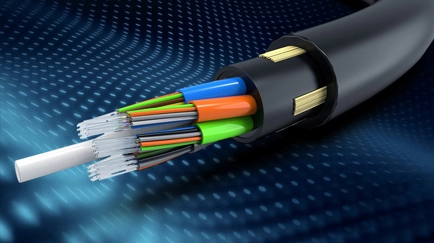
Blog
blog Location: Home > Blog > Technical Article
Location: Home > Blog > Technical Article
 Update Time:2025-08-15
Update Time:2025-08-15 Traffic:
Traffic: Fiber optic patch panels are central to network organization and management. They function as hubs for connecting fiber optic components. Installation requires careful planning, and cable management is crucial for preventing damage and ensuring performance. Regular maintenance, including cleaning connectors and inspecting cables, is necessary for long - term reliability. Effective use of these panels brings benefits such as improved reliability, enhanced performance, simplified expansion, and reduced maintenance costs.
- Introduction to Fiber Optic Patch Panels
- Installation of Fiber Optic Patch Panels
- Cable Management in Fiber Optic Patch Panels
- Maintenance of Fiber Optic Patch Panels
- Benefits of Effective Organization and Management in Networks with Fiber Optic Patch Panels
Fiber optic patch panels are essential components in modern network infrastructure. They serve as the central hub for organizing and managing fiber optic cables. These panels provide a secure and structured environment for terminating, splicing, and connecting fiber optic cables. By using patch panels, network administrators can easily manage and maintain the network, reducing the risk of cable damage and improving overall network performance.
The main function of a fiber optic patch panel is to provide a convenient and organized way to connect different fiber optic components. For example, it can connect fiber optic cables from different locations, such as data centers, telecommunications rooms, or building entrances. It also allows for easy patching and re - patching of fiber optic connections, enabling network administrators to quickly adapt to changing network requirements.

The installation of fiber optic patch panels requires careful planning and execution. First, choose the appropriate location for the patch panel. It should be easily accessible for maintenance and management, and it should also be protected from environmental factors such as dust, moisture, and physical damage. Then, prepare the fiber optic cables for termination. This may involve stripping the outer jacket, cleaning the fiber, and installing connectors.
When installing the patch panel, make sure to follow the manufacturer's instructions carefully. Mount the panel securely in the rack or enclosure, and organize the cables neatly. Use cable management accessories such as cable ties, cable trays, and cable labels to keep the cables organized and easily identifiable. After installing the patch panel, perform a thorough testing to ensure that all connections are working properly.
Cable management is a critical aspect of fiber optic patch panel operation. Proper cable management helps to prevent cable tangling, bending, and damage, which can affect network performance. In a fiber optic patch panel, cables should be routed in a logical and organized manner.
One common method of cable management is to use cable trays or cable ladders to support the cables. These accessories provide a stable and structured pathway for the cables, making it easier to route and manage them. Another important aspect of cable management is labeling. Each cable should be labeled clearly with its source, destination, and other relevant information. This makes it easier to identify and troubleshoot cables in case of problems.
Regular maintenance is essential to ensure the long - term reliability of fiber optic patch panels. This includes cleaning the connectors, checking for loose connections, and inspecting the cables for damage. Over time, dust, dirt, and other contaminants can accumulate on the connectors, which can affect the quality of the optical signal.
To clean the connectors, use a specialized fiber optic cleaning tool. Gently wipe the connectors to remove any contaminants. Check all connections regularly to make sure they are tight and secure. If a loose connection is found, tighten it immediately. Inspect the cables for any signs of damage, such as cuts, bends, or kinks. If damage is detected, replace the cable as soon as possible to avoid network outages.
Effective organization and management of networks using fiber optic patch panels offer several benefits. Firstly, it improves network reliability. By keeping the cables organized and protected, the risk of cable - related problems is reduced. Secondly, it enhances network performance. Proper cable management and maintenance ensure that the optical signals are transmitted with minimal loss and interference.
Thirdly, it simplifies network expansion and upgrades. With a well - organized patch panel, it is easier to add new connections or upgrade existing ones. Finally, it reduces the cost of network maintenance. By preventing cable damage and reducing the need for frequent repairs, organizations can save money on network maintenance costs.
Q: What is a fiber optic patch panel?
A: A fiber optic patch panel is an important component in modern network infrastructure. As a central hub for organizing and managing fiber optic cables, it provides a safe and structured environment for terminating, splicing and connecting fiber optic cables.
Q: What should be paid attention to when installing a fiber optic patch panel?
A: When installing, you need to choose a suitable location that is easy to maintain and can withstand environmental factors; follow the manufacturer's instructions, firmly install the panel in the rack or housing, organize the cables, and conduct a comprehensive test after installation.
Q: How to manage cables in a fiber optic patch panel?
A: Cable trays or cable ladders can be used to support cables and provide a stable path for cables; each cable should be clearly marked with relevant information such as source and destination.
Q: What aspects of fiber optic patch panel maintenance are included?
A: It includes cleaning connectors and using special tools to remove contaminants; checking whether the connection is loose and tightening it in time; checking whether the cable is damaged and replacing it as soon as possible if it is damaged.
Q: What are the benefits of using fiber optic patch panels for effective network organization and management?
A: It can improve network reliability and reduce the risk of cable-related problems; enhance network performance and ensure minimal optical signal transmission loss and interference; simplify network expansion and upgrades; and reduce network maintenance costs.
